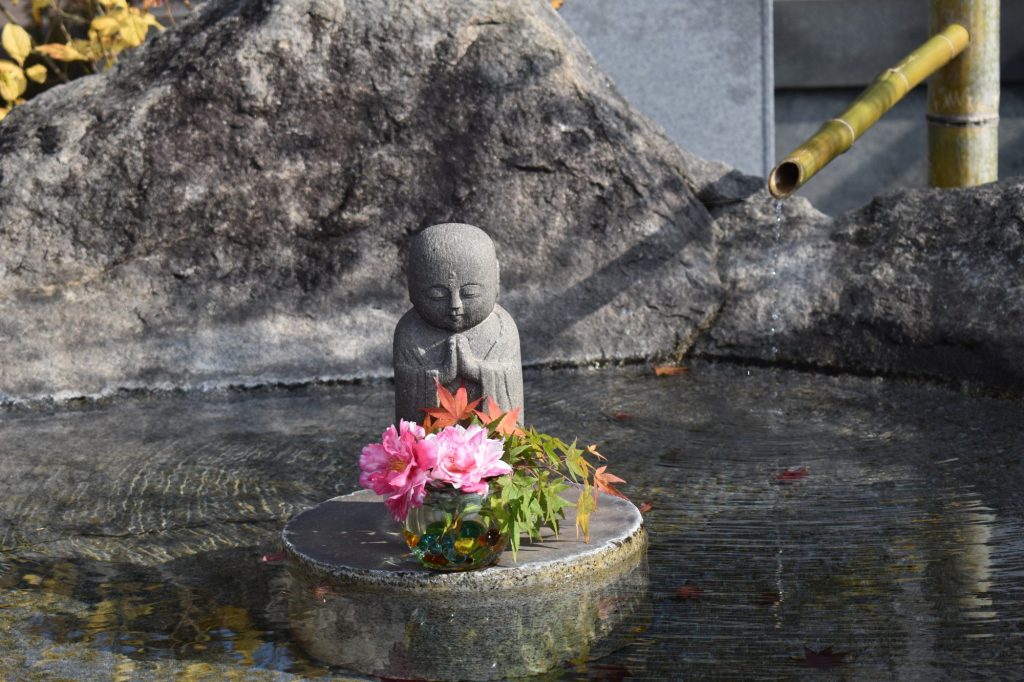シンプル & 高汎用
ライトニングはシンプルでカスタマイズしやすい WordPress テーマです。抜群の拡張性でビジネスサイトにもブログにもオールラウンドに対応します。
倶利伽羅地区には刈安・上野堂畑遺跡(縄文時代)があり、七野墳墓群(弥生時代)もあり、古い昔から人々の生活の場となっていました。古代に入っても、都に通ずる道として、北陸道が整備され、重要な生活基盤となっていました。この北陸道では、津幡町竹橋から小矢部市桜町までの約12.8キロが、現在、歴史国道「北陸道」として認定されています。ハイキングコースとして広く親しまれ、道の駅倶利伽羅源平の郷の「竹橋口」から「埴生口」の街道沿いに設置された「歴史国道」の案内板に従って、散策することができます。沿道は豊かな自然があふれ、名所や史跡を訪ねながら、いにしえから現代までの歴史を体験できます。
この地域での歴史的に最も重要な出来事として、平安時代末期に「源平倶利伽羅峠の戦い」がありました。時代を下りますが、戦国時代には佐々成政と前田利家の戦いが繰り広げられ、現在戦場の跡として、龍ケ峰城跡が残っております。江戸時代に入ると、加賀藩の参勤交代があり、竹橋が宿場町として栄えました。江戸時代の俳人である松尾芭蕉もこの地を訪れております。
俱利伽羅に春が訪れると、倶利迦羅不動寺を中心に約6,000本の八重桜が咲き乱れます。5月には新緑の木々でいっぱいとなります。秋には紅葉の季節を迎え、一面色とりどりのじゅうたんに変身します。俱利伽羅に生息するニホンカモシカが運良ければ、IR俱利伽羅駅付近でも見ることができます。倶利伽羅山の山頂付近にも関わらず、湧水があり、旅人の喉を潤しました。高度300mにも満たない山でも、ブナの木を見ることができます。このように人を引き付ける自然豊かな地域となっております。俱利迦羅不動寺には年間約10万人が訪れる祈りの場となっております。また、埴生護国八番宮は源氏の大将であった木曽義仲が戦勝祈願した場所として知られ、その後も多くの武将が訪れております。歴史国道「北陸道」沿いには「道しるべ」として石造り三十三観音像があり、旅人の安全を祈る場となっておりました。
IR倶利伽羅駅前に住んでいる筆者は、「倶利迦羅峠へはどのように行ったら良いですか?」と尋ねられることが時々ありました。子供の頃から、日常的にこのようなことが繰り返されると、もっと多くの人に倶利伽羅を知ってもらいたいという願望が芽生えました。倶利伽羅を紹介する何かできないだろうかと考え、ホームページを開設し、情報発信していくことにしました。
The Kurikara area is home to the Kariyasu and Uwano-dohata ruins (Jomon Period) and the Hichino tomb cluster (Yayoi Period), and has been a place for people to live since ancient times. In ancient times, the Hokuriku Road was built as a road leading to the capital, and was an important infrastructure for people’s lives. On this Hokuriku Road, approximately 12.8 km from Takenohashi, Tsubata-cho to Sakura-machi, Oyabe-shi is now recognized as a historical national road, the “Hokuriku Road. Widely popular as a hiking course, visitors can follow the “Historic National Road” information boards set up along the road from “Takebashi Exit” at Roadside Station Kurikara Genpei-no-Sato to “Haniu Exit”. Along the route, you can experience history from ancient times to the present day while visiting famous landmarks and historic sites in the abundant nature.
The most important historical event in the region was the Battle of Genpei Kurikara Pass at the end of the Heian Period (794-1185). In the Warring States Period, the battle between Sasa Narimasa and Maeda Toshiie was fought, and the ruins of Ryugamine Castle remain today as the site of the battle. In the Edo period (1603-1867), the Kaga Clan made a pilgrimage to the area, and Takenohashi prospered as an inn town. Matsuo Basho, a haiku poet of the Edo period, also visited this area.
When spring comes to Kurikara, about 6,000 double-flowered cherry trees bloom around Kurikara Fudo Temple. In autumn, the area is transformed into a carpet of colorful foliage. If you are lucky, you can even see Japanese serows near the IR Kurikara Station. Despite being near the top of Mt. Kurikara, there was a spring that quenched the travelers’ thirst. Even on a mountain less than 300 meters in altitude, beech trees can be seen. The area is thus rich in nature that attracts people.
The author, who lives in front of IR Kutsukara Station, was asked, “How do I get to the Kutsukara Pass?” Since I was a child, this recurrence on a daily basis has given me a desire to let more people know about Kurikara. I wondered if there was anything I could do to introduce Kurikara to the public, so I decided to open a website and disseminate information about it.
